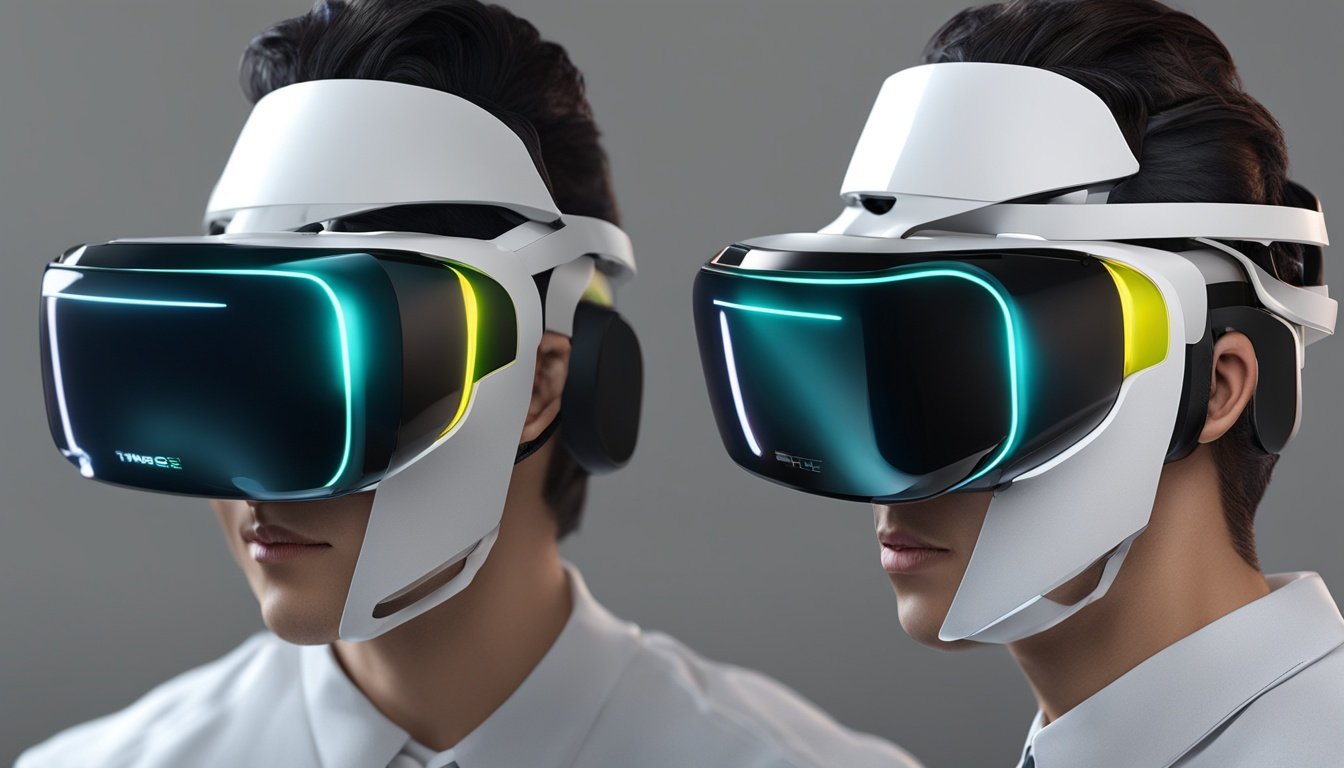Virtual Reality, or VR, is changing how we see the world. It uses special headsets and controllers to take us into a digital world. This lets us explore new places and interact with things in ways that feel real.
Thanks to new tech, VR is getting cheaper and easier to use. This means more people can enjoy its amazing experiences. It’s set to change many areas of life, from entertainment to education.
Key Takeaways:
- Virtual Reality is a form of immersive technology that transports users to a digital environment.
- It offers interactive experiences that replicate real-world scenarios.
- Advancements in hardware and software have made Virtual Reality more affordable and accessible.
- Virtual Reality has the potential to revolutionize various industries.
- Immersive experiences provided by Virtual Reality are changing the way we perceive and engage with the world.
Understanding Immersive Technology
Immersive technology is changing how we use digital content. It blends the virtual and physical worlds. This lets users enter captivating virtual places or improve their real surroundings.
It includes many technologies. Virtual reality (VR), augmented reality (AR), and mixed reality (MR) are key ones. These offer unique experiences for different levels of immersion and interaction.
Virtual Reality (VR)
Virtual reality takes users into simulated worlds, pulling them away from reality. Users wear headsets and use controllers to move and interact in these digital spaces. VR makes users feel like they’re really there, creating a strong sense of presence.
Augmented Reality (AR)
Augmented reality adds digital info to the real world. Users see and touch virtual objects in their everyday surroundings. It’s used in games, learning, and training.
Mixed Reality (MR)
Mixed reality blends VR and AR, mixing the real and virtual. Users can interact with virtual objects while seeing their real world. It’s used in architecture, design, and healthcare for visualizing digital content in real settings.
Immersive technology is changing many industries, from gaming to healthcare. It opens up endless creative possibilities. As it grows, it will change how we learn, work, and communicate.
The Evolution of Virtual Reality
Virtual Reality (VR) has changed a lot since it started. It was once seen as a far-off idea. Now, it’s a real technology changing many fields.
At first, VR had big, pricey systems that not many could use. But, tech advances have made VR cheaper and easier to use.
“VR has the potential to transform our lives by creating immersive experiences that transport us to new realities.”
Companies like Oculus, HTC, and Sony have made VR popular. They’ve made VR headsets that let people play games and explore new worlds.
Immersive Gaming Experiences
VR has changed the gaming world a lot. VR headsets let gamers dive into games like never before.
Games become more real with VR. Gamers can go on exciting adventures and meet characters that seem real. The way VR tracks movements and responds to controllers makes games feel more real.
As VR gets better, games will too. We’ll see more amazing and touching games in the future.

| Benefits of Virtual Reality in Gaming: |
|---|
| 1. Immersive gameplay |
| 2. Enhanced realism |
| 3. Intuitive controls |
| 4. Social interaction in virtual worlds |
| 5. Virtual reality arcades and eSports |
Applications of Virtual Reality
Virtual Reality (VR) is changing many fields like education, healthcare, and entertainment. It brings new ways to learn, treat patients, and enjoy shows. VR makes experiences more real and engaging.
1. Education
VR is changing education by making learning fun and interactive. Students can visit historical sites, learn about different cultures, and interact with content in new ways. It lets students practice skills safely and learn more deeply.
This tech makes learning more fun and effective.
2. Healthcare
VR is making a big impact in healthcare. It helps with pain management, therapy, and training for professionals. VR therapy helps people overcome fears and anxiety by using virtual worlds.
It also helps surgeons practice in a safe virtual space, making surgeries safer.
3. Entertainment
VR is also big in entertainment. It lets people enter new worlds and experience stories in a new way. Whether it’s exploring fantasy lands or going on adventures, VR offers a unique experience.
Gaming and movies in VR let users take part in the story, making entertainment more engaging.

VR technology is getting better, and its use in education, healthcare, and entertainment will grow. It has huge potential for creating impactful experiences. As more industries use it, we can expect more innovation.
Conclusion
The future of Virtual Reality (VR) is exciting and will change how we see the world. As technology gets better, VR headsets will be lighter and cheaper. They will also track movements better and give us more realistic feelings.
VR has big potential in many areas. It will change entertainment, education, healthcare, social life, and how we work together. VR can take us to new places, make learning better, change medical treatments, and help us connect with others in new ways.
But, we need to think about the challenges too. Making VR available to everyone is important for fairness. We must also think about privacy and how VR uses our personal data. Plus, we need to study how VR affects our health to keep users safe.
In short, VR is set to change our lives with its immersive experiences. By keeping innovating and solving problems, we can make VR a big part of our lives. It will open new doors in many areas and change how we see the world.
FAQ
What is virtual reality (VR)?
What is the difference between virtual reality (VR), augmented reality (AR), and mixed reality (MR)?
How has virtual reality (VR) evolved over time?
What are the applications of virtual reality (VR)?
What does the future hold for virtual reality (VR)?
Source Links
- https://www.talespin.com/reading/exploring-the-future-of-immersive-technology
- https://medium.com/@emperorbrains/the-future-of-virtual-reality-new-horizons-in-immersive-experiences-d87ed0fc586a
- https://www.telecomreview.com/articles/reports-and-coverage/7318-virtual-reality-the-future-of-immersive-experiences

